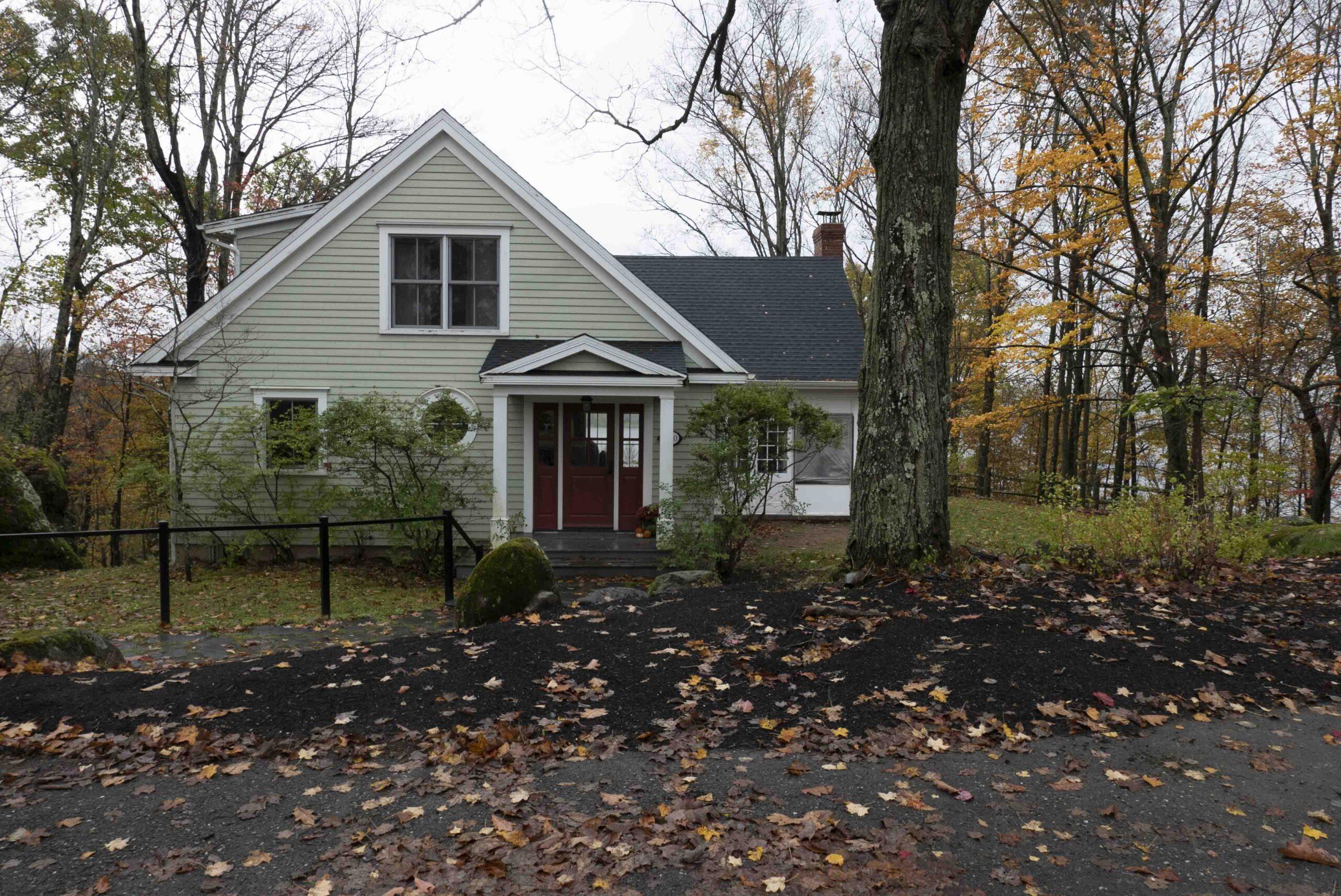If asked to define an Italian garden, many of us would mention symmetry, shades of green and statuary with classical themes. La Mortella does not conform to these stereotypes. Rather, it is a garden with an international flair that sings to those with ears to hear.
Located on the island of Ischia, in the Bay of Naples, La Mortella is a 20th century garden created by Susana Walton, an Argentinian married to the British composer William Walton. She and her husband bought the unpromising volcanic property in 1956, in part because of the view.
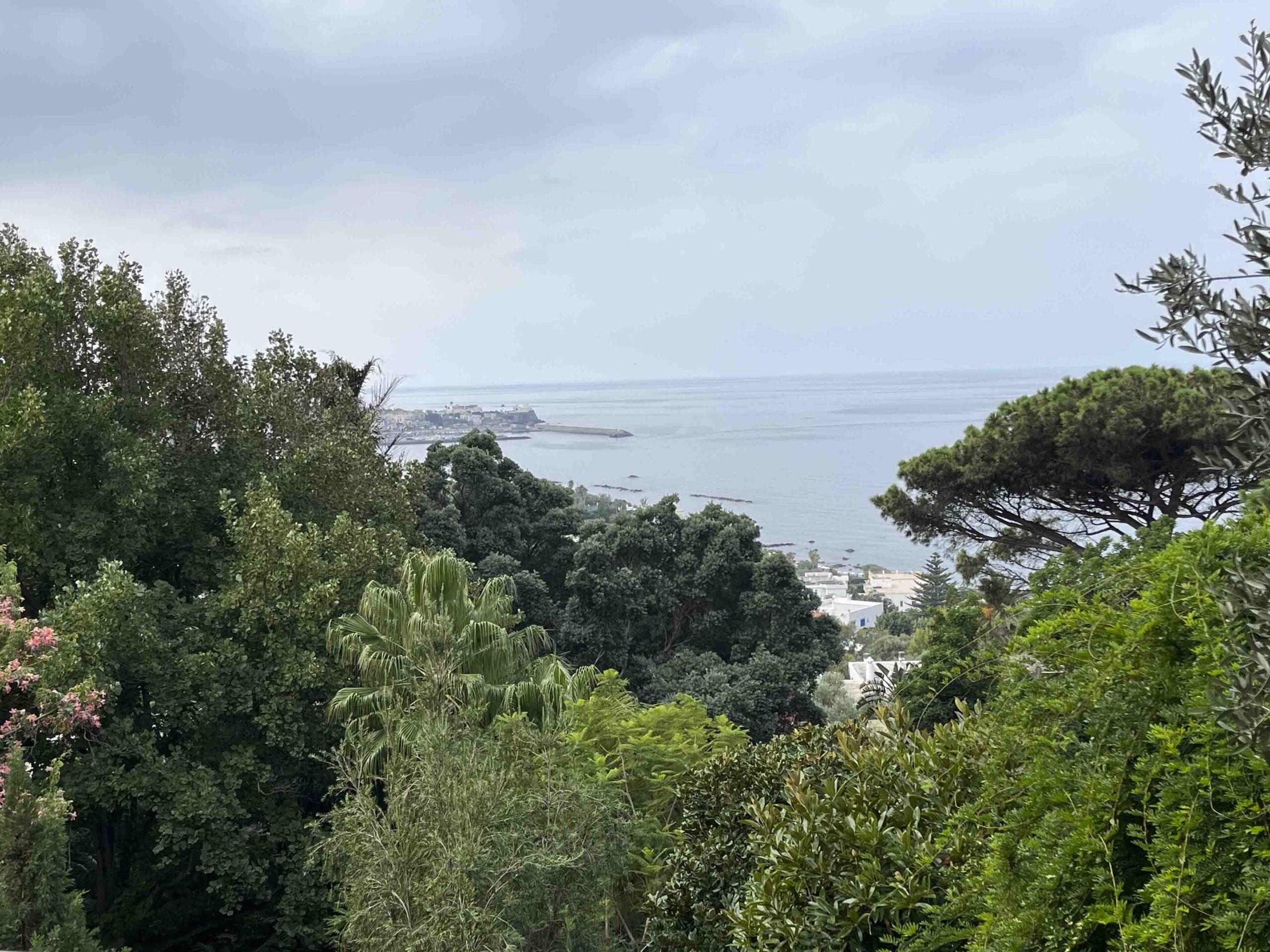
The outlook onto the sea and the town of Forio may explain why the Waltons bought the property.
A splendid view was not enough, though. Susana was a gardener and wanted to create a garden. This she did, with passion, skill and determination, over many decades.
Initially, the Waltons requested help from the eminent British garden designer Russell Page, then at the height of his career. He came, stayed a few days and left behind sketches that took the couple a decade to implement. During those years, the volcanic soil was enriched, walls built, paths created and shade provided for plants too tender to withstand the harsh conditions.
The garden comprises two distinct areas, a shady valley and a open sunny hillside. Page’s design included a rill, a single axis that runs through the valley like a backbone. This feature, so characteristic of Page’s designs, established a formality that is now set off by lush plantings. In the early years, the lack of water was a serious problem, but once the island was joined to the mainland by an underwater pipe, water could be used in abundance.
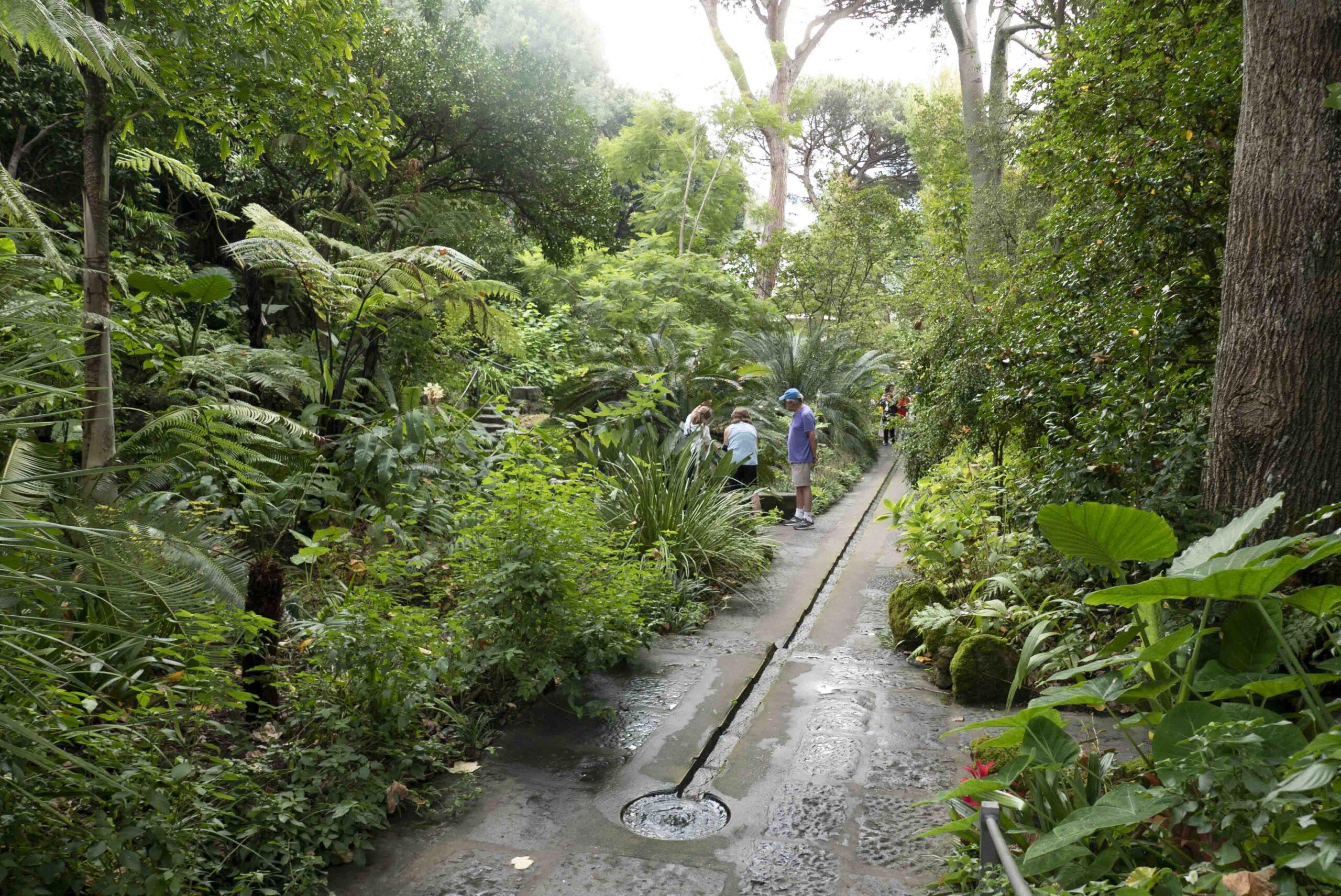
Tropical plants grow enthusiastically along the length of the rill.
It now splashes and shines in each of the fountains that Page designed. One is an octagon, designed to celebrate William Walton’s 80th birthday.
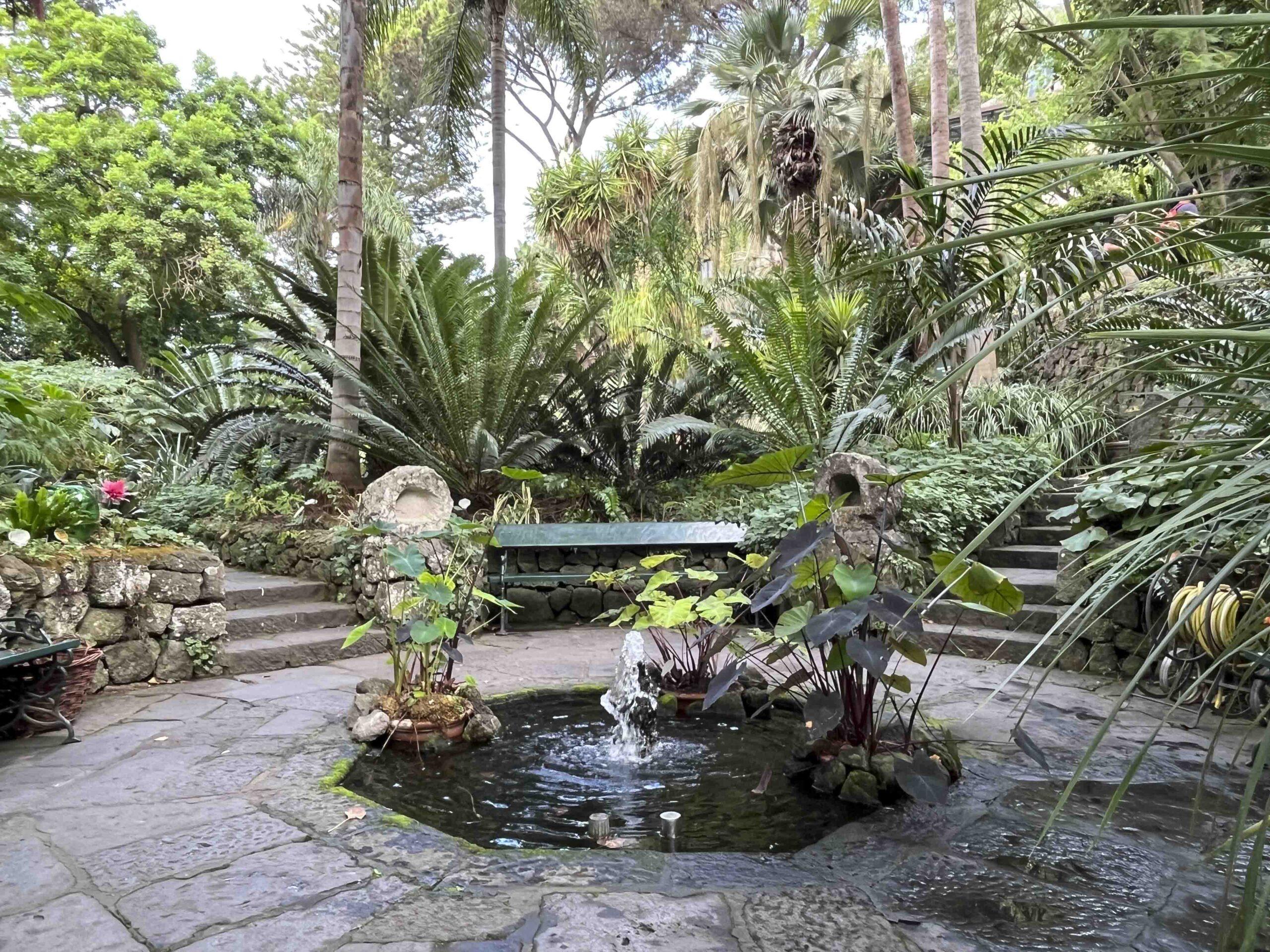
This pool is surrounded by tulip trees (Liriodendron tulipifera), tree ferns and orchids
A jet rises from the main fountain. Rising from the water, an off-centered volcanic rock is encrusted with bromeliads and surrounded by lotus flowers, ferns and water lilies.
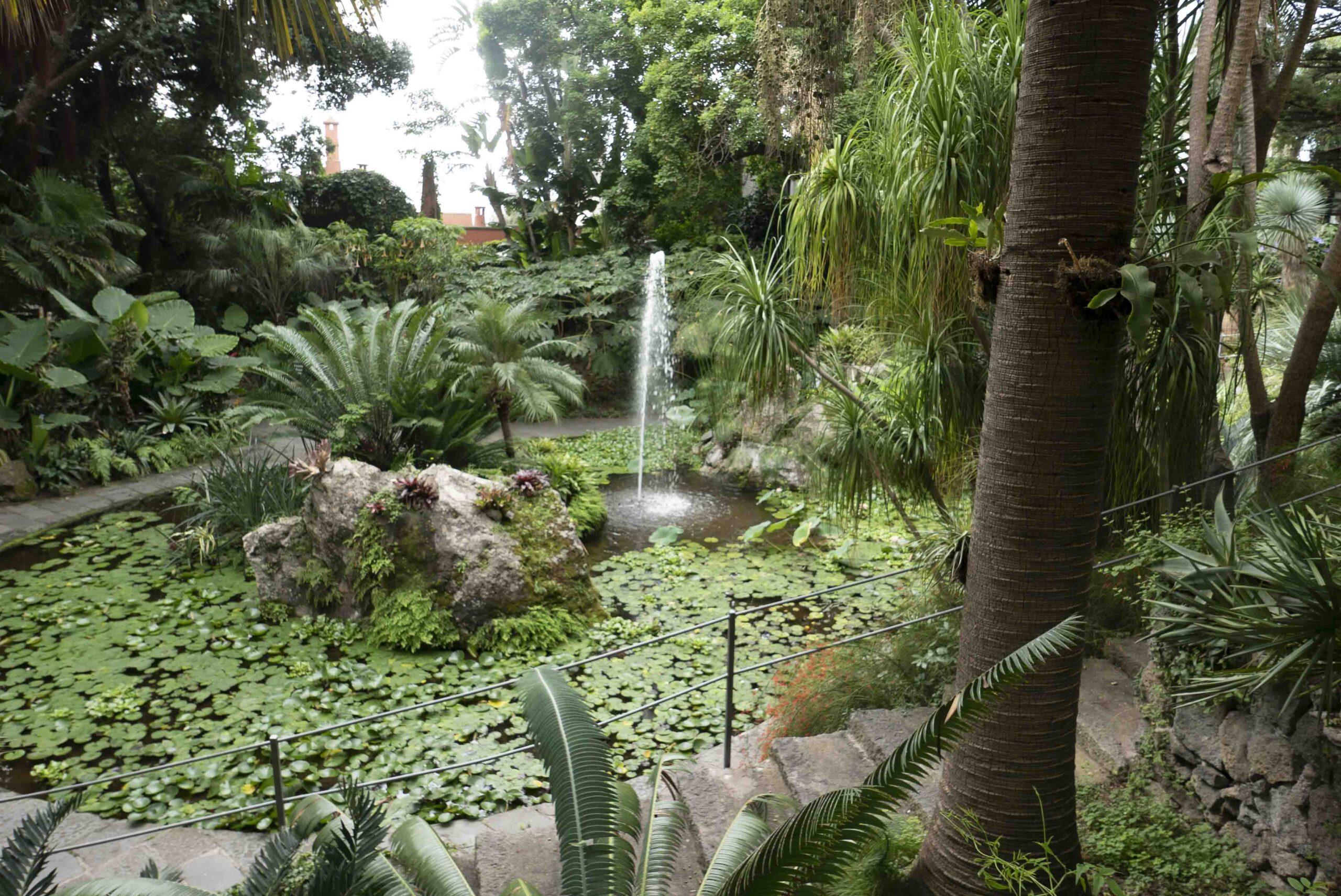
Paths radiate from this fountain. One leads toward a Victoria house where giant water lilies float in front of “La Bocca” a mask inspired by Walton’s composition ‘Facade’ and sculpted by the English artist Simon Verity.
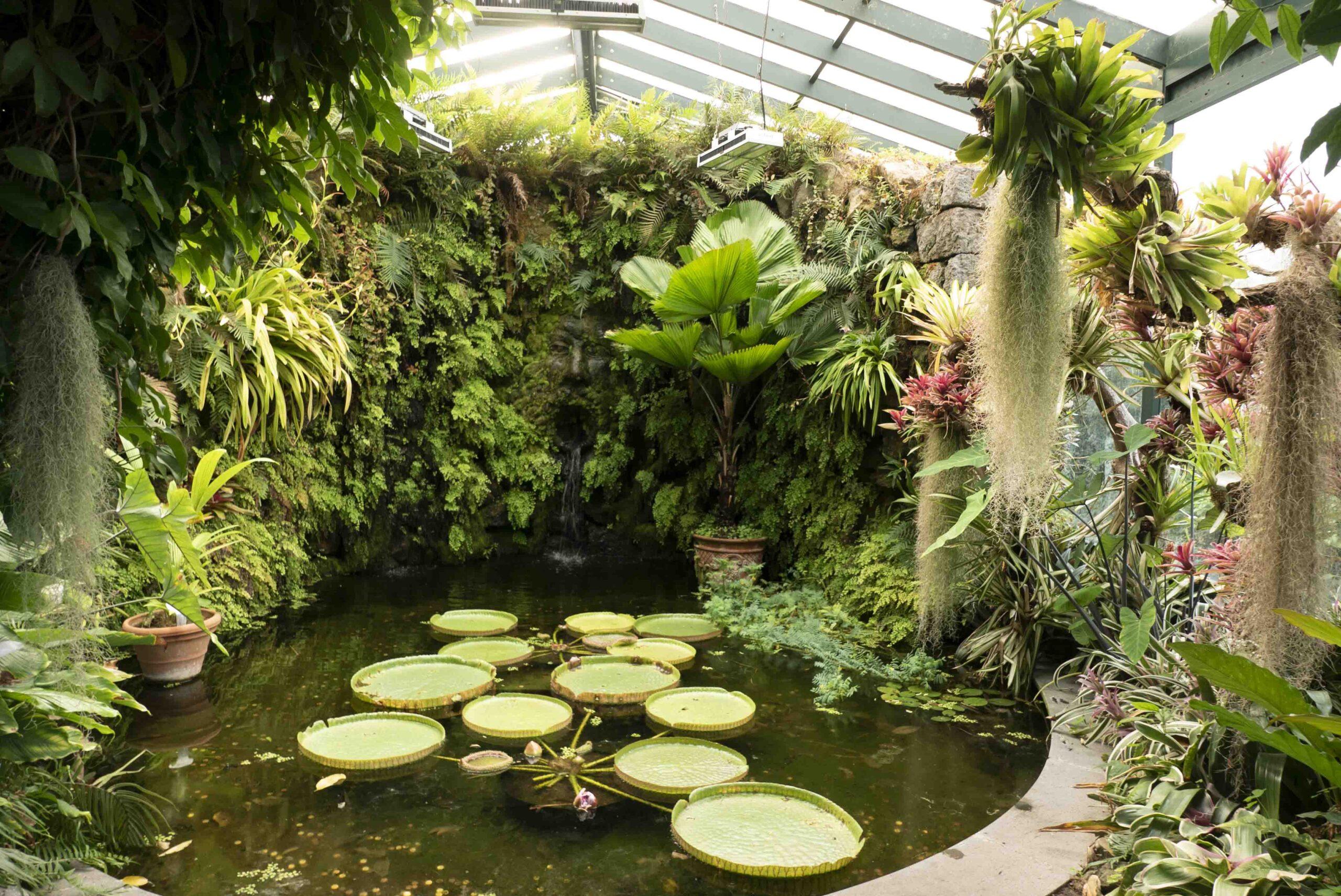
The mask is now well hidden by the lush growth. Can you find it?
Another path leads uphill, to the extensive hillside garden designed and planted by Susana. A maze of thoughtfully designed walkways lead past the obligatory gift shop, the Walton’s house, a restaurant, a tropical greenhouse and an open-air Greek amphitheatre where concerts are given.
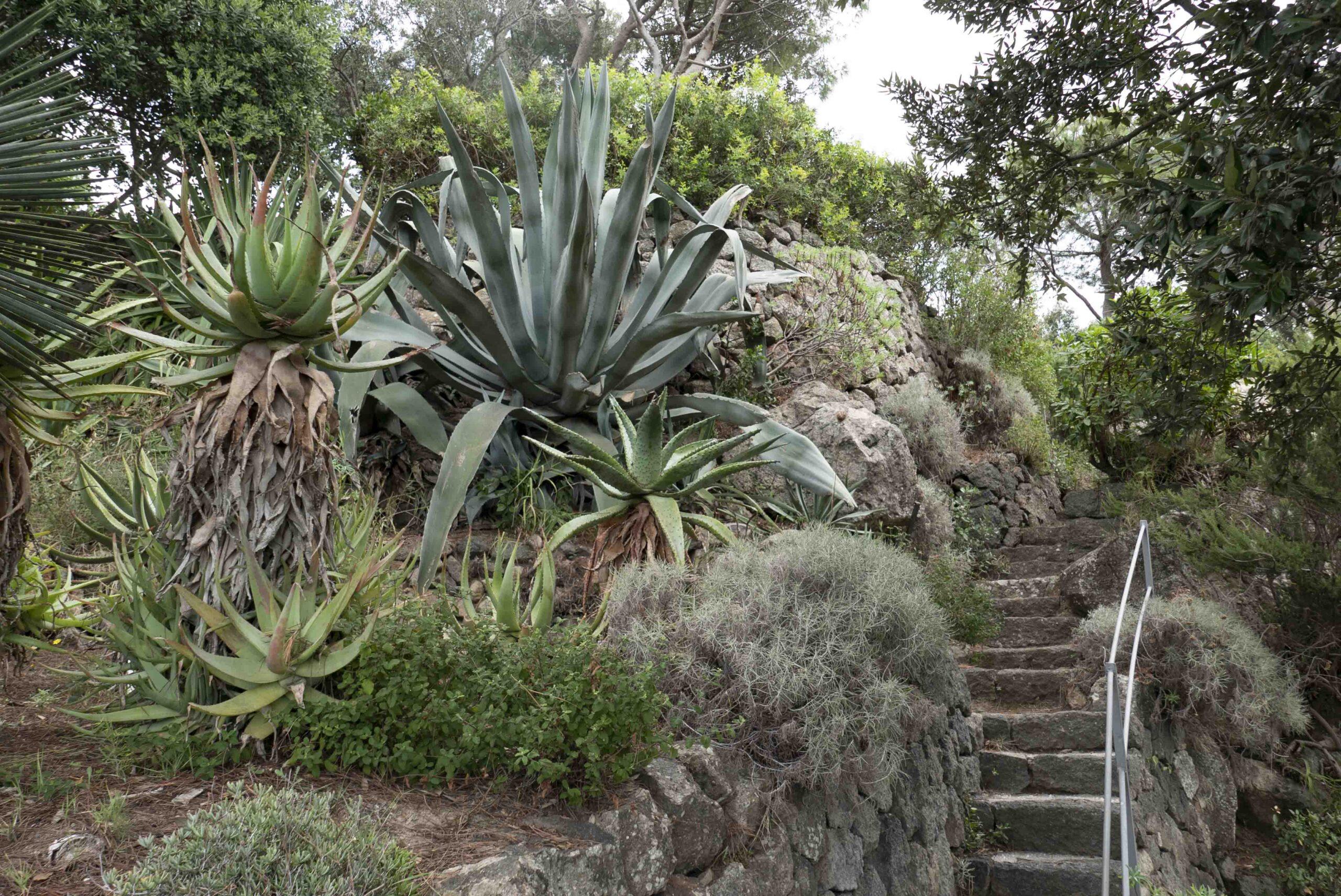
Paths are paved now, and staircases well equipped with railings make it easy to climb the steep hillside.
Ponds appear throughout this hillside garden, each with its own distinctive character. The fish and crocodile at the crocodile cascade add a humorous touch without feeling kitschy.
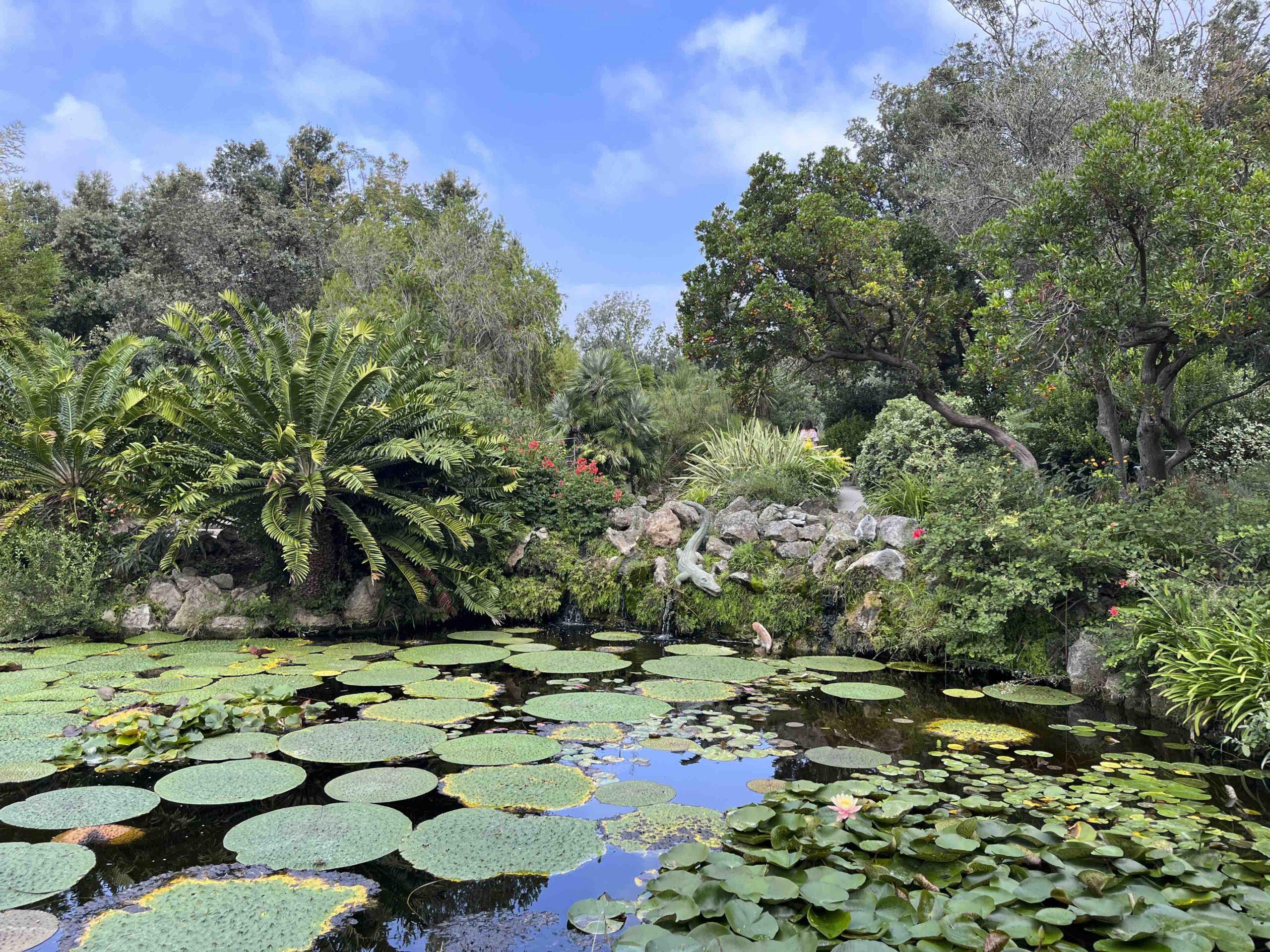
Rare and exotic plants from around the world appear throughout the hillside and valley gardens, all chosen to suit the particularities of the difficult site. Susana’s skill as a plantswoman is evident everywhere. She started a South American tree (Chorisia speciosa) from seed; now it towers over one of the paved paths added after Walton died (1983) and the garden passed into the hands of the Fondazione William Walton e La Mortella.
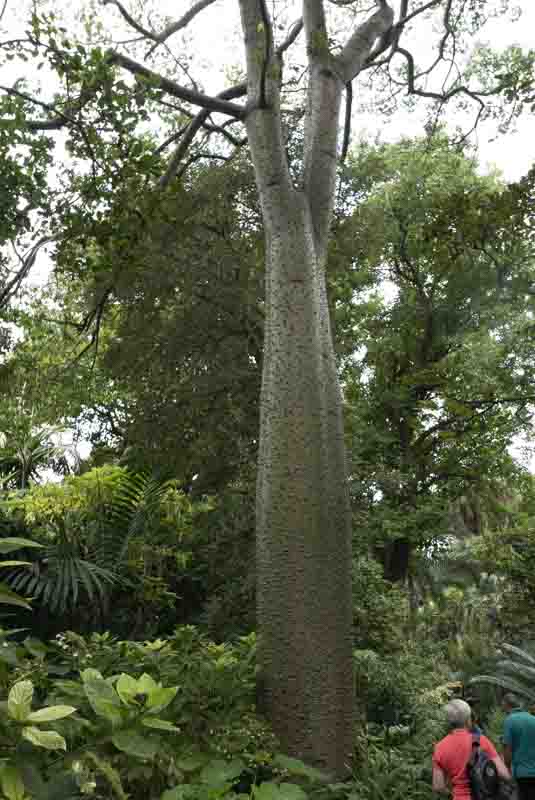
La Mortella, named after the myrtle bushes (Myrtus communis) growing between the rocks, is truly an international garden. Visiting, I heard English, Italian, German, French, Spanish, Mandarin and other languages I couldn’t identify. More than the internationalism of the visitors, though, are the touches seen in the wide variety of unfamiliar-to-me tropical and sub-tropical plants from around the world.
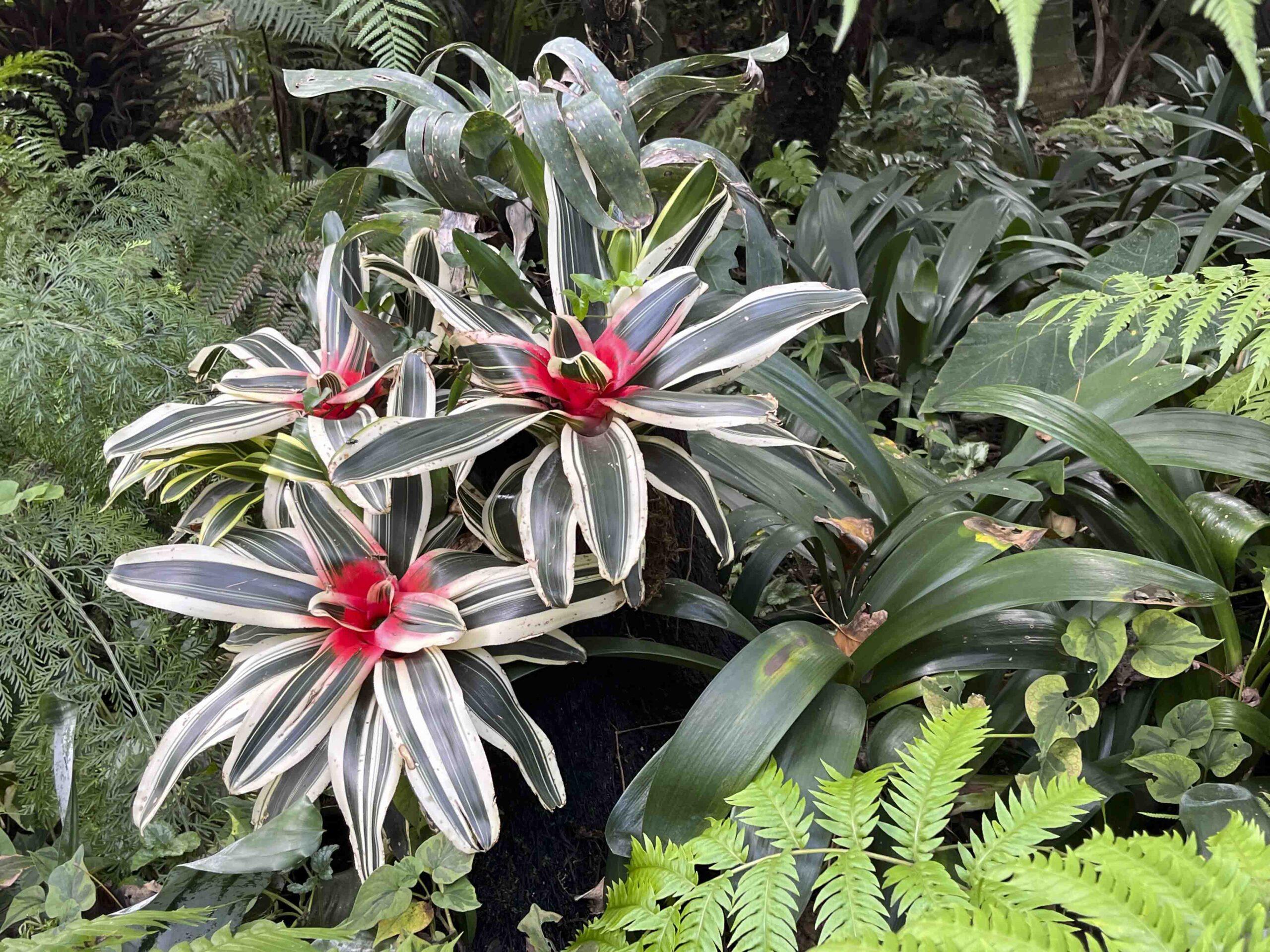
I can’t name this plant. Can you?
A global awareness is suggested as well in the Thai house, adjacent to yet another pond …
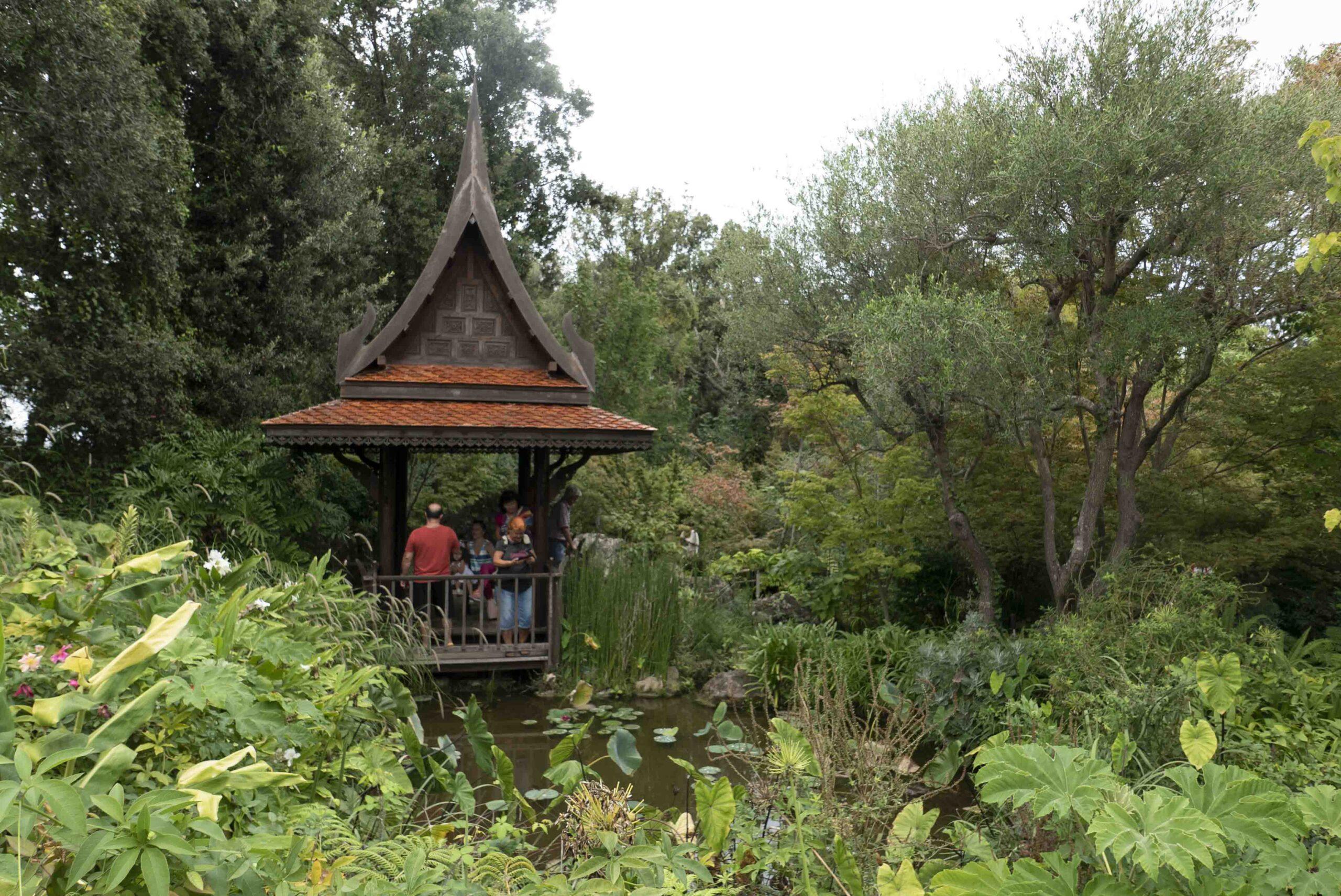
The Thai house seems an odd addition but since Thai porcelain is available in the gift shop, there may be some personal connection I’m unaware of.
… and at what seems a Mayan-influenced Temple of the Sun.
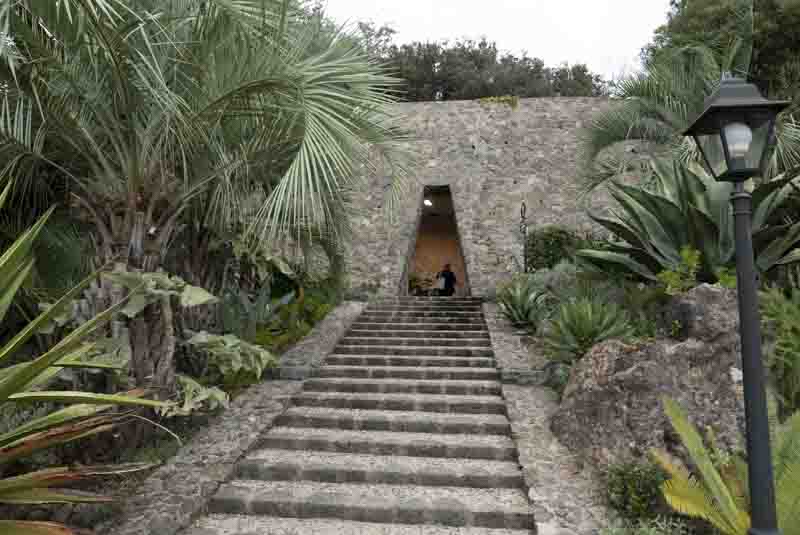
The shape of the door makes me think of Mayan architecture.
I didn’t particularly like this building in which three rooms allude to birth, adulthood and death. It was hot and damp, yet overtly sexual frescoes made me smile: they reminded me of those I’d seen days before at Pompeii. The frescoes and the bas-reliefs by Simon Verity were inspired by the myth of Apollo, god of the sun and of music, and to love, death and the cycle of life, adding a layer of history to the layers of rock.
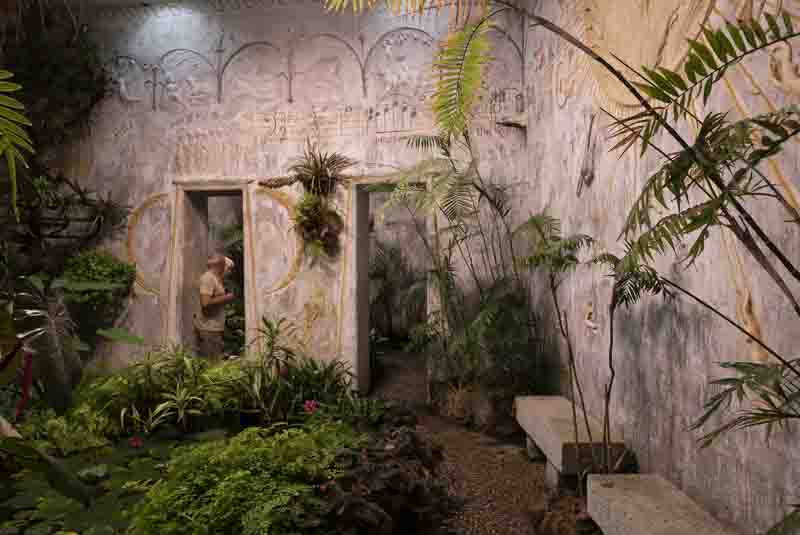
Musical notes and quotations covered the wall in this room.
Along with a few other aspects in the hillside area, this Temple felt out of keeping with the garden as a whole, and this despite the words in the central room about living happily, with love. I was touched, though, by the memorials nearby to William and to Susana. His, an enormous boulder overlooking the water, houses his ashes. Hers is a nymphaeum that includs an inscription which brought me to tears: “This green arbour is dedicated to Susana, who loved tenderly, worked with passion and believed in immortality.”
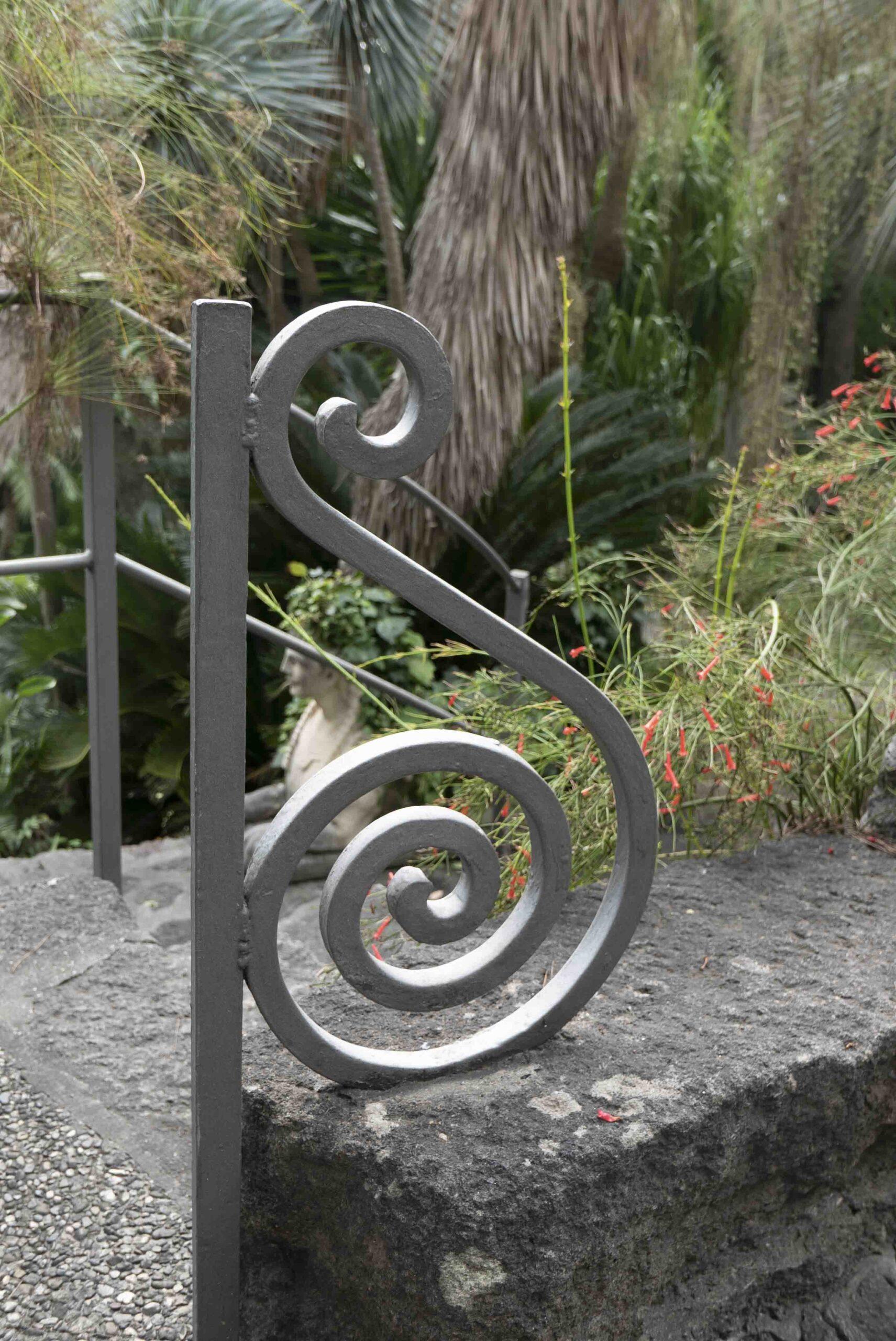
The railing, designed as a treble clef, pays hommage to William Walton’s career.
A sense of joy and living life to the fullest permeates La Mortella. For many years, my sister and I talked about visiting the garden together. A singer who was the soprano soloist in multiple performances with the Baltimore Symphony Orchestra of Walton’s Facade, Nancie felt a particular connection to the composer. Her spirit was present with me as I moved through the garden. I could hear her singing and speaking, commenting on this and that, laughing and loving. I am sorry she never visited the garden, but am grateful that I did.





